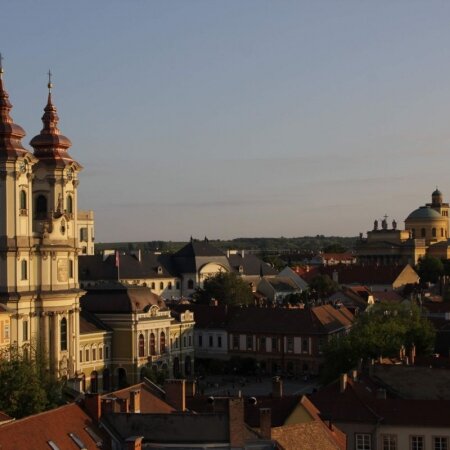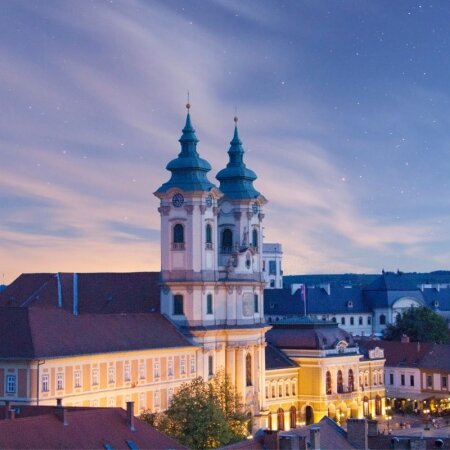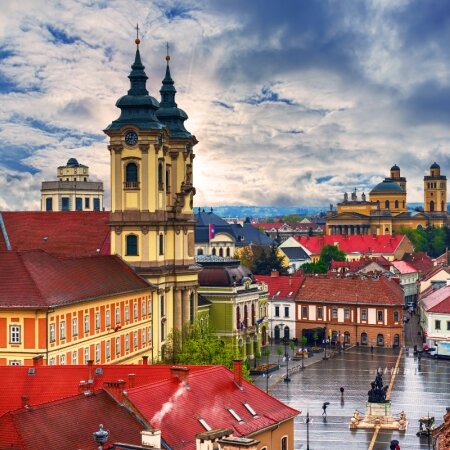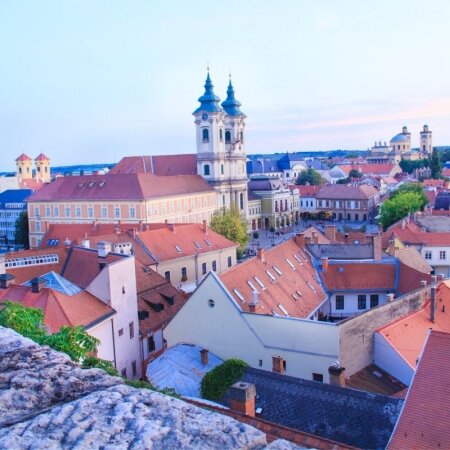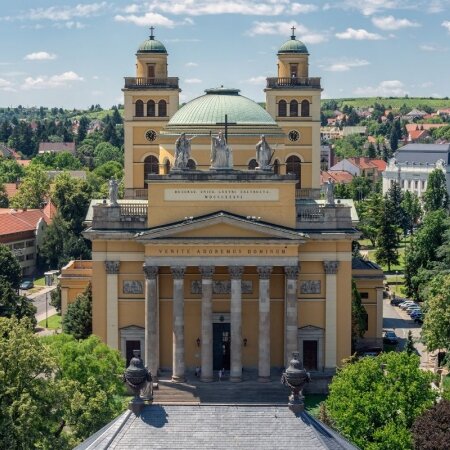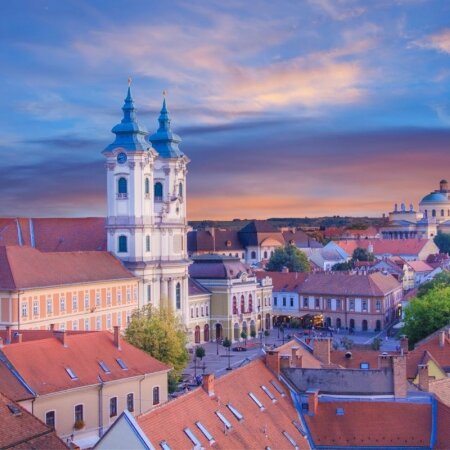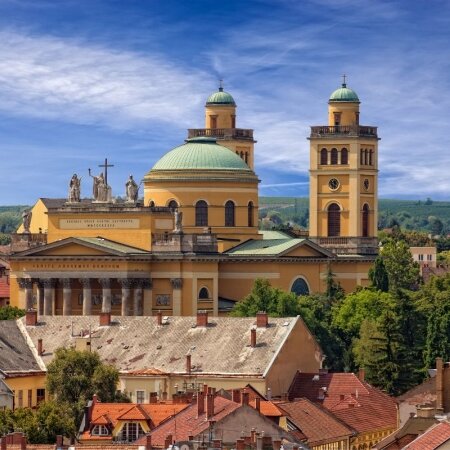Introducing Eger
Blessed with beautifully preserved baroque architecture, Eger is a jewellery box of a town with loads to see and do.
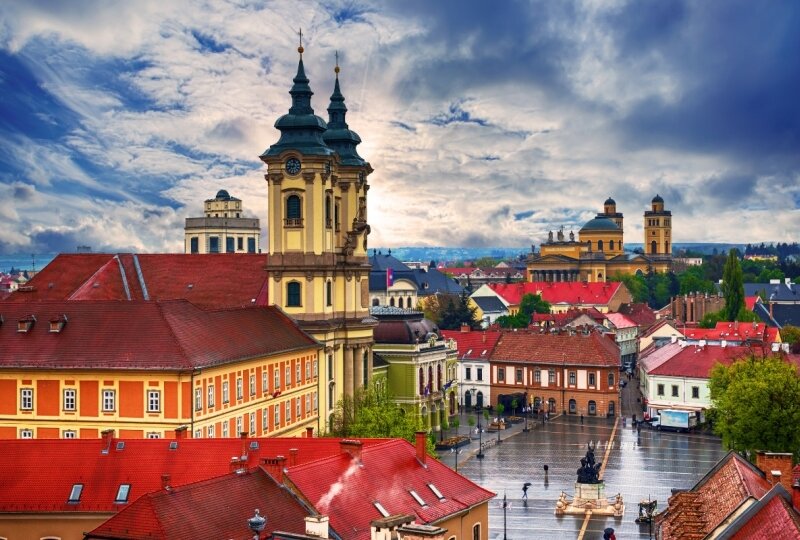
Explore the bloody history of Turkish occupation and defeat at the hilltop castle, climb an original Ottoman minaret, listen to an organ performance at the colossal basilica, or relax in a renovated Turkish bath. Then spend time visiting the winecellars in the Valley of Beautiful Women, tasting the celebrated Eger Bull's Blood (Egri Bikavér) and other local wines from the cask. Flanked by the Northern Uplands’ most inviting range, the Bükk Hills, hiking and horse-riding excursions are never far away.
-
Basilica
A highlight of the town’s amazing architecture is the Basilica. This neoclassical monolith was designed in 1836 by József Hild, the same architect who later worked on the cathedral at Esztergom. A good time to see the place is when the ornate altars and a soaring dome create interesting acoustics for the half-hour organ concert.
-
Lyceum
Directly opposite the Basilica is the recently renovated Zopf-style Lyceum (1765). The 60,000-volume library on the 1st floor of the south wing contains hundreds of priceless manuscripts and codices. The trompe l’oeil ceiling fresco (1778) depicts the Counter-Reformation’s Council of Trent (1545–63), with a lightning bolt setting heretical manuscripts ablaze. The Astronomy Museum on the 6th floor of the east wing contains 18th-century astronomical equipment, an observatory and a planetarium with regularly scheduled shows. Climb three more floors up the so-called Magic Tower (Varász Torony) to the observation deck to try out the camera obscura, the ‘eye of Eger’, designed in 1776 to entertain townspeople.
-
Archbishop's Palace
Northeast of the basilica is the Archbishop’s Palace and its Ecclesiastical Collection , with priceless vestments, church plate and liturgical objects.
-
County Hall & Fazola Gate
The tree-lined street of Kossuth Lajos utca boasts dozens of architectural gems, including the delightful County Hall, the main door of which is crowned by a wrought-iron representation of Faith, Hope and Charity by Henrik Fazola, a Rhinelander who settled in Eger in the mid-18th century. Walk down the passageway, and you’ll see more of his magnificent work – two baroque wrought-iron gates that have superseded the minaret as the symbol of Eger.
-
Dobó Square
In the centre of Eger, on Dobó Square, there is a statue of Istvan Dobo, made by Alajos Strobl in 1907. The monument has become one of the town's symbols. The other statue on the square was made by Zsigmond Kisfaludy Strobl in 1967, in memory of the army defending the fort.
-
The Minaret of Eger
The Minaret of Eger is the northernmost historical building of the Turkish era in Europe. It was built shortly after the Turks victory in 1596 and it used to belong to the Djami of Kethuda. The 40-metre-high minaret was made of red sandstone, and it has a fourteen-sided ground plan. After Eger was recaptured in 1687 by imperial forces, the people of the town tried to demolish the tower with 400 oxen, however, it seemed tough enough to resist this euphoric reveal of sudden freedom. Reaching the narrow balcony of it requires climbing up 97 small but high steps, however, it is well worth the effort as there is a unique panorama of the town from up there.
-
Eger Castle
The best view of the city can be had by climbing up cobblestone Vár köz from Dózsa György tér to Eger Castle, erected in the 13th century after the Mongol invasion. Much of the castle is a modern reconstruction, but you can still see the foundations of 12th-century St John’s Cathedral on the eastern side of the complex. Models and drawings in the István Dobó Museum, housed in the former Bishop’s Palace (1470), painlessly explain the history of the castle. On the ground floor, a statue of Dobó takes pride of place in the Heroes’ Hall. The 19th-century building on the northwestern side of the courtyard houses the Eger Art Gallery , with works by Canaletto and Ceruti. The terrace of the renovated 1549 Dobó Bastion, which collapsed in 1976, offers stunning views of the town; it now hosts changing exhibits. Beneath the castle are casemates hewn from solid rock, which you may tour with an English speaking guide. Other attractions, including the Panoptikum and 3D film cost extra.
Back to programs

